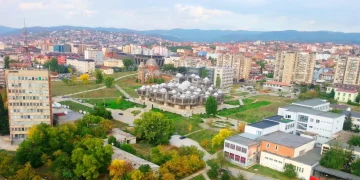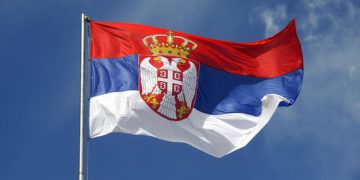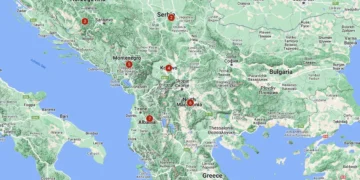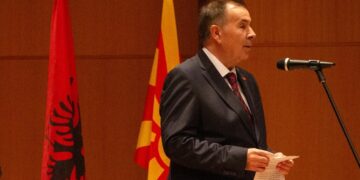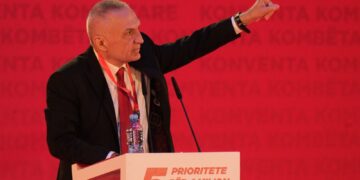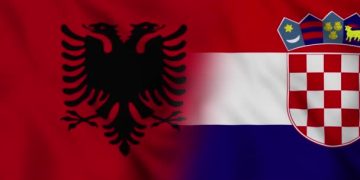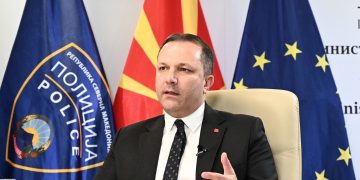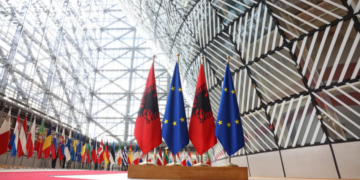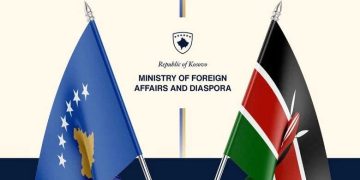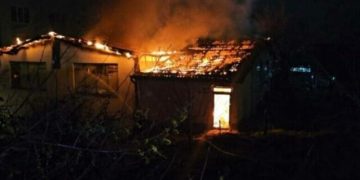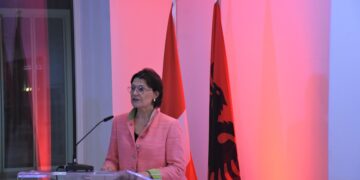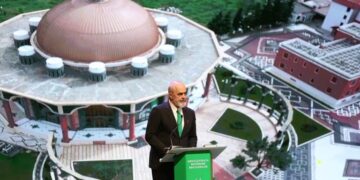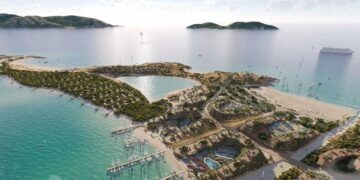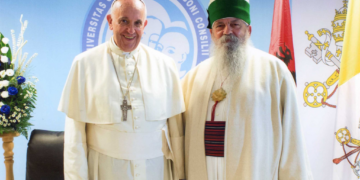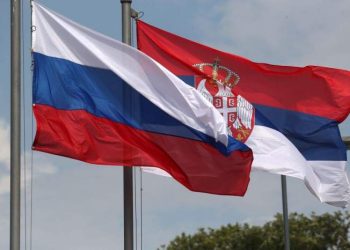By Kristijan Fidanovski and Valentino Grbavac.*
As the rest of Europe is bracing for the next decennial cycle of population counts, Bosnia and Herzegovina (B&H) and North Macedonia stand as two of only a few countries in Europe whose census dates are not finalized yet. B&H held its last count in 2013, but the results were highly exaggerated. All three constituent peoples, especially Bosniaks and Croats, counted members of the diaspora to inflate their share of the total population. Census data was, sadly, used for political infighting, rather than for resource allocation in areas such as public transportation, education, and finally, as the country is becoming increasingly aware amid the COVID-19 epidemic, healthcare.
The situation is even more dire in North Macedonia, which held its last completed census in 2002. In his 2020 book The Sum of the People discussing census procedures around the world, Andrew Whitby cites only 21 countries missing the 2010 census cycle, only two of which are in Europe: Ukraine and North Macedonia. The last attempt at a census was abruptly stopped in 2011, partly due to political fears of variously unfavourable ethnicity numbers. As per the Macedonian constitution, special language rights and proportional representation in the executive government and public administration are guaranteed to all ethnic communities that exceed 20% of the population. In 2002, ethnic Albanians made up about 25% of the 2 million Macedonian citizens (current estimates put the total population between 1,5 and 1,8 million)
In both countries, the fear that the next census results could open a dangerous Pandora’s box has posed a recurring obstacle to holding fair and accurate population counts.
Bosnia and Herzegovina: Ethnic Fragmentation, Shrinking Population
According to the 1991 census, B&H had 4.38 million inhabitants. However, this number included many citizens living abroad. A corrected 1991 census, which excludes the diaspora, showed that there were only 4.14 million people in the country. During the war, from 1992 to 1995, around one hundred thousand civilians and soldiers were killed and more than 2.3 million people became refugees. The war had a devastating and lasting effect on demographics. The population was severely reduced, and the post-war economic stagnation, corruption, unresolved political issues, and overall instability pushed many citizens to seek a better life elsewhere, mostly in Europe and North America. According to the inflated 2013 census, B&H had 3,531,159 inhabitants. However, this number was vastly exaggerated, and additional hundreds of thousands of people have emigrated since.
Another effect that the war had was the creation of largely ethnically homogeneous territories within B&H. Interestingly, the general ratio of the three constituent peoples living in B&H did not change all that much. In 1991, there were 44% Bosniaks, 17% Croats and 31% Serbs; in 2013, there were 50% Bosniaks, 15% Croats and 31% Serbs. However, their distribution across the country changed dramatically.
Between the 1991 census and the 2013 census, the number of Serbs living in the territory that is today Republika Srpska (RS) increased by 15%, while the number of Bosniaks and Croats decreased by 61% and 79%. Today, around 95% of all Serbs in B&H live in RS.
Similar levels of ethnic homogeneity can be observed in the Federation of B&H (FBiH). Out of ten cantons, six have an absolute Bosniak majority and four have an absolute Croat majority.
Between the 1991 census and the 2013 census, the number of Bosniaks living in what are today the six Bosniak-majority cantons increased by 12%, while the number of Serbs and Croats decreased by 90% and 37%. Today, around 85% of all Bosniaks in B&H live in these six cantons.

Between the 1991 census and the 2013 census, the number of Croats living in what are today the four Croat-majority cantons increased by 5%, while the number of Bosniaks and Serbs decreased by 10% and 79%. Today, around 240 thousand Croats, or over two-thirds of all Croats in Bosnia and Herzegovina, inhabit these four cantons.
Before the war, towns and cities such as Sarajevo, Zenica, Bugojno, Doboj, Livno, Čapljina and Banja Luka were multiethnic, with a substantial population from all three constituent peoples and no absolute majority from any of the groups. All these cities today have a clear majority from one of the constituent peoples. The only truly multiethnic town in which there is at least 10% of each of the three constituent peoples present is Glamoč, whose population of just under two thousand comprises around 30% Bosniaks, 30% Serbs and 40% Croats.
Clearly, the level of territorial homogeneity is staggering. So then, why would the three constituent peoples engineer their numbers in order to show that there are more of them than there really are if the internal borders between them are already largely solidified?
In general, the 2013 census was not perceived as a statistical tool for long-term planning, but as an opportunity to show political strength by all constituent peoples. Importantly, censuses in B&H are also used for determining the distribution of tax revenue received by cantons in the FBiH. Both Croats and Bosniaks had a tangible benefit in boosting the population of cantons in which they are a majority. On the other hand, Serbs purposely did not inflate their number in the FBiH. This was used as an argument that more Serbs “disappeared” from the FBiH than Bosniaks “disappeared” from RS between 1991 and 2013.
In general, the 2013 census was not perceived as a statistical tool for long-term planning, but as an opportunity to show political strength by all constituent peoples.
In 2018, the Agency for Statistics published a 170-page detailed labour force survey, which estimated that there were only 2.7 million people living in the country. This is much lower than the 3.3 million estimates recently used by Tim Judah in an otherwise illuminating article. If we look at the birth rate and emigration, it quickly becomes apparent that the real number of people living in B&H is indeed around 2.7 million.
The birth rate, as in the rest of the Western Balkans, has seen a dramatic decline since 1991. In 1991, there were 65,430 live births in B&H. After the war, in 1996, that number fell to 46,594, a decline of 29%. Live births declined further to around 33 thousand and hovered around this level for a decade between 2003 and 2013 before the country experienced yet another exodus of predominantly young people. In the last two years, the number of live births declined by a staggering three thousand, or around 10%. In 2019, there were only 27,209 live births, or 58% less than in 1991.
The number of births is likely to continue to fall rapidly, as every new generation of young people is less numerous than the previous generation, further reducing the fertile base. There have been more deaths than births every year for the past decade. Currently, the net balance between births and deaths is a negative ten thousand per year.
When we factor in emigration, the future looks very bleak. The irony is that the territory fought over during the war will be almost empty in the future, with new generations of Bosnian and Herzegovinian citizens growing up in Austria, Germany, Slovenia, Croatia, and elsewhere.
The irony is that the territory fought over during the war will be almost empty in the future
According to a 2019 NDI poll, half of the people in the country had a family member emigrate in the last five years. Eurostat shows that between 2013 and 2018 over 170 thousand people moved to the EU alone using a work permit. This does not even include Croats and some Bosniaks, as virtually all Croats and many Bosniaks in Croat-majority cantons have Croatian citizenship which allows them to live and work in the EU without a work permit. The number of work permits in 2018 was 53,764, and it soared to almost 72,000 in 2019. Work permits are likely to continue to rise as Germany, the country with most B&H immigrants, liberalized its visa restrictions for non-EU workers this March.
Once we take emigration and birth rates into consideration, the 2018 estimate of 2.7 million inhabitants do not seem so low anymore. Today, the population is likely just a bit over 2.6 million. However, local politicians are not doing much to combat an emigration epidemic that could threaten the very economic survival of the country.
In fact, the ratio of workers to pensioners is rapidly decreasing and is dangerously close to falling below one. The COVID-19 pandemic will not help economic prospects, and there is a real danger of the pension fund imploding in the coming years, with more people reaching the retirement age of 65 and fewer people entering the workforce.
If these trends continue, B&H might effectively disappear as a country. It will not do so with a bang as many have feared over the years, but with a whimper. The demographic prospects are dire in what is already a poor country plagued by corruption, political and ethnic tensions, and bloated bureaucracy. If B&H is to have a fighting chance to retain its rapidly dwindling population, the action is needed today.
If these trends continue, B&H might effectively disappear as a country.
The first step should be a realistic census which would provide an accurate snapshot of the country needed to model and plan any meaningful reforms. To do so, political elites on all three sides need to put their political bickering aside and realize that if demographic degradation is not tackled immediately, they will soon be left with no people to govern.
North Macedonia: The Puzzle of the 20% Threshold
All over the region, politicians from different ethnicities tend to unite around fostering disunity between said ethnicities. Just like their B&H counterparts, Macedonian politicians have extended this broader maxim to the sphere of demography, but in a somewhat different manner. While Serb, Croat and Bosniak leaders in 2013 were all confident in their superior ability to inflate the numbers of their respective ethnic group at the expense of the other two, Macedonian and Albanian coalition partners in 2011 chose not to take their chances.
Тen days into the count, Prime Minister Nikola Gruevski and the leader of the biggest Albanian party, Ali Ahmeti, stopped the 2011 population census citing technical difficulties. Seven years later, the now-defunct Special Public Prosecutor’s Office disagreed with their explanation and charged Gruevski and Ahmeti with causing budgetary damage of 2.8 million euros by stopping the census gratuitously.
From a self-serving standpoint, Gruevski and Ahmeti had compelling reasons for their decision. To use some demographic jargon, North Macedonia is a textbook case of conflicting determinants of population ratios. Conventional wisdom says that ethnic Albanians are consistently boasting higher birth rates than ethnic Macedonians, but they also exhibit higher emigration, so it is difficult to estimate which factor outweighs the other.
Conventional wisdom says that ethnic Albanians are consistently boasting higher birth rates than ethnic Macedonians, but they also exhibit higher emigration.
Thus, all possibilities seemed open in 2011: the Albanian share could have been anywhere from its 2002 level of 25% to below the 20% affirmative-action threshold. The latter case would have been a clear political lose-lose. Ahmeti would have lost many of the hard-won group rights he had been pivotal to obtaining after the limited armed conflict of 2001, thus likely giving up much of his political capital. Gruevski, for his part, would have risked losing a loyal partner in the dozens of crimes that his government has since been alleged or proven to have committed.

But an even bigger concern for Gruevski lay in the overall numbers. A government that prided itself on its flashy pronatalist policies could not afford to admit negative population growth. These declines were mainly driven by emigration, which had been massively aggravated by Gruevski’s unsuccessful 2008 NATO bid and repeated failure to solve the country’s crucial name dispute with Greece. Coupled with an antiquated and stubbornly low retirement age of 64 years for men and 62 for women (still unchanged by the current government), the rapid ageing of North Macedonia’s workforce remains bound to pose severe long-term damage to the national economy.
Yet, for the two coalition partners today, Zoran Zaev and – again – Ahmeti, the biggest Pandora’s box is ethnicity. In fact, the conflicting ethnic-demographic trends cited above may well prove to be mere “conventional wisdom”. If estimates of up to 600,000 people leaving North Macedonia in the last two decades are even close to correct, emigration has long become a pan-ethnic phenomenon rather than a predominantly Albanian habit in a country of 2 million citizens (as of 2002).
Moreover, on the eve of 2020, North Macedonia was devastated by the news that the number of nationwide deaths had exceeded nationwide births in 2019 for the first time since independence (and probably ever). Importantly, this milestone was mostly attributable to dramatic drops in fertility levels in almost all Albanian-majority municipalities, as the Macedonian birth rate had largely maintained its (low) previous level.
On the eve of 2020, North Macedonia was devastated by the news that the number of nationwide deaths had exceeded nationwide births.
Thus, ethno-demographic trends may be countervailing, or may in fact be somewhat convergent, but they remain extremely difficult to predict in a country that has not counted itself in 20 years. With the familiar anxiety of 2011 returning almost a decade later, Zaev and Ahmeti have been providing a litany of excuses for postponing the unpostponable.
Between taking oath in the summer of 2017 and ratifying the name North Macedonia in early 2019, Zaev and Ahmeti’s government was (rightly) focused on solving the country’s biggest bilateral dispute that had been plaguing its international integration for nearly three decades. In the subsequent year, however, the name dispute was replaced by a series of (not all equally time-consuming or pressing) distractions: the now-finalized entry into NATO and the upcoming opening of EU accession talks, the much-postponed early parliamentary election eventually held on July 15, and most recently, the COVID-19 crisis.
For the foreseeable future, the difficulty of holding a population census will continue to highlight the limits of the uneasy coexistence between North Macedonia’s commitment to group rights and desire for effective governance. There are two possible solutions to this conundrum.
The first and arguably optimal, yet less likely solution is for the census to be held as soon as possible, without any political interventions, and with strong oversight from the international community. Even if the share of ethnic Albanians were to prove lower than 20%, the short-term consequences for Albanian group rights would be negligible.
The first and arguably optimal, yet less likely solution is for the census to be held as soon as possible.
Like other much smaller minorities, such as Turks, Albanians would maintain the right to frequent primary, secondary and even tertiary education in their native language. Public administration quotas would be rescinded, but the ethnic balance between employees would be unlikely to suffer: no massive firings of Albanian workers – in the unlikely case that these would even be attempted – would be tolerated by the international community.
Finally, participation in the executive government would also be virtually ensured, as North Macedonia’s proportional electoral model guarantees the inclusion of at least one ethnic Albanian party, unless the two biggest Macedonian parties decide one day to form their own grand coalition, which is unimaginable at present. While the 2016 election inspired some hope that voting along ethnic lines might be eroding (Zaev’s ruling party, the Social Democratic Union of Macedonia, diverted tens of thousands of votes away from the ethnic Albanian parties), DUI was able to restore most of these votes in this year’s election.
The second – and increasingly floated – solution would be to omit the ethnicity question from the census altogether. An obvious incentive for taking this shortcut would be to avoid yet another round of political haggling and hold this crucial statistical operation sooner rather than later. However, while not at all uncommon in censuses around the world, this kind of omission is logically prevented by the 20% threshold. Leaving out the ethnicity question would immortalize the 2002 census as a permanent measure of the country’s ethnic distribution. At first glance, this would maintain the political status quo and avoid societal tension in the short term. However, it would also bolster a popular claim in anti-Albanian circles that the 20% threshold has never been anything other than a subtle vehicle of “Albanization”, rather than a sincere effort to enhance the group rights of any ethnicity exceeding 20% of the total population. Taking the path of least resistance and omitting the ethnicity question could well undermine the fragile ethnic co-existence it allegedly strives to preserve.
The second – and increasingly floated – solution would be to omit the ethnicity question from the census altogether.
Demography minus Politics = (Effective) Policies?
Clearly, all political interventions in statistical operations are political in their own way. Yet, there is one important commonality between inflating the representation of one’s own ethnicity and seeking creative ways to bypass the ethnicity conundrum. Both endeavors take away an enormous amount of finite energy from the primary objective of any population count: policy planning. For both B&H and North Macedonia, the biggest challenge consists in restoring demography from the byzantine domain of large-P “politics” to its natural realm of small-p “policies” in fields as diverse as education, transportation, and healthcare. Ultimately, this is a problem with a deceptively simple solution. The best way to make Macedonian and Bosnian and Herzegovinian citizens count is to stop manipulating ethnicity ratios — and start counting citizens before there are no more left to count./EWB
*Kristijan Fidanovski and Valentino Grbavac hold MA degrees in Eurasian, Russian and East European Studies from Georgetown University’s School of Foreign Service. Kristijan is an incoming DPhil candidate focusing on fertility policies in Eastern Europe at Oxford University, while Valentino is an incoming PhD candidate at the University of Edinburgh focusing on power-sharing in divided societies and has worked on minority rights and voting issues in Bosnia and Herzegovina.



